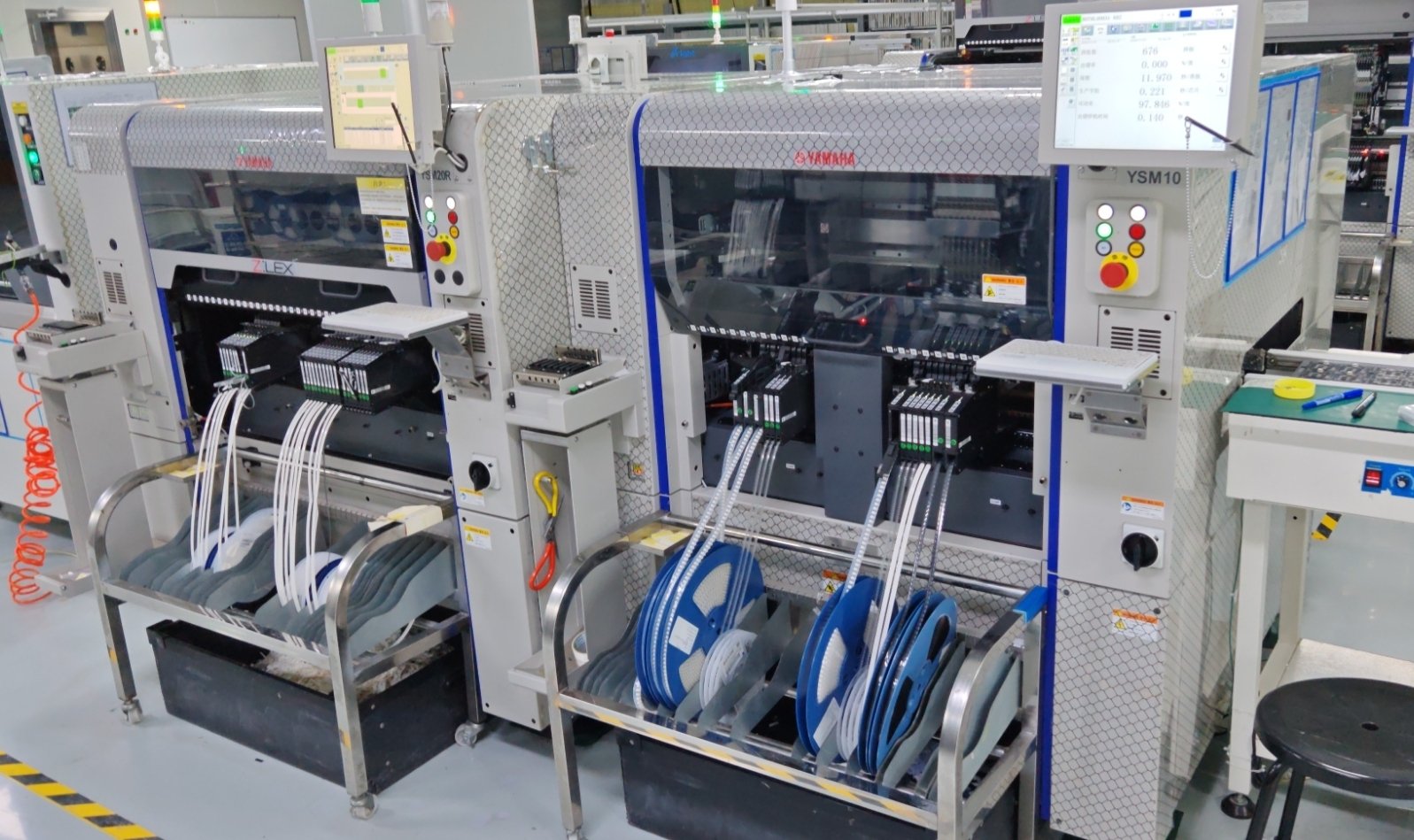Project update 6 of 6
Factory Tour
by ODrive TeamThank you so much for your support during our crowdfunding campaign! We have been hard at work getting the ODrive Micro ready for launch. We wanted to share an update on where Micro production is at right now as we gear up for the January release date.
Gerber files are how we communicate the entirety of the ODrive Micro design to our manufacturer. Everything needed to build the PCB is sent to our manufacturer, from the copper patterns on each PCB layer, to all the holes and vias, to the board shape and mounting holes. In order to more efficiently manufacture the ODrive Micro, we panelize them — essentially making one big PCB that’s comprised of nine Micros in a 3x3 grid. They’ll get manufactured and assembled in this large panel, then separated to individual pieces before getting sent to you.
In the image above, you get to see the third inner layer of the ODrive Micro (six layers total!) as well as all the mounting holes. Around the border of the panel, you can see four small dots in blue, and larger dots in green — these are alignment holes and markings used to align each layer of the PCB during manufacturing, and then hold the panel in the SMD (surface mount devices) Pick and Place machine during assembly.
Speaking of manufacturing, we recently had a virtual tour of the contract manufacturer’s factory in Shenzen. This tour allowed us to get a better sense of the procedures and equipment in place on the production line, and to ensure that there are no surprises in production.
Here, we have an AOI machine, standing for “Automatic Optical Inspection.” This automatically takes 3D images of the PCB after assembly, and checks the placement of each individual component, to ensure that nothing has been misplaced or shifted.
These are pick and place machines on one of our contract manufacturer’s three production lines. This machine is what actually places each component on the ODrive Micro PCB, before going through an automated soldering process. Components are supplied in paper “tapes,” which you can see feeding into the machine, and then automatically picked up, scanned to ensure correct pickup and rotation, then placed onto the PCB in the desired location. This high-speed machine can place all the components on an ODrive Micro in just under 30 seconds! The large honeycomb mesh around the machine is a grounding net, ensuring that stray static electricity doesn’t build up and damage the boards in the machine.
Then, we got a tour of their storage warehouse, where we got to see our components neatly stored in a temperature and humidity controlled environment. They even have a vacuum packing machine, to give sensitive components an extra layer of protection during storage! These sorts of things can seem like overkill, but it’s an essential part of ensuring the products manufactured are high quality and reliable.
We want to be sure that the ODrive Micro is compliant with EU and UK regulations, so it has to undergo rigorous emissions testing to meet CE and UKCA requirements. This includes radiated and conducted emissions tests to verify it doesn’t interfere with nearby electronic devices, as well as electrostatic discharge (ESD) immunity testing to ensure it withstands static shocks during handling and use. Additionally, radiated and conducted immunity tests were performed to confirm that the device operates reliably in environments with external electromagnetic interference. These measures help ensure the ODrive Micro performs consistently and safely in various conditions.
The ODrive Micro is hitting the assembly line in the next few weeks! We can’t wait to see what the community will build with it. We’ll be back with more updates about the product launch soon!





